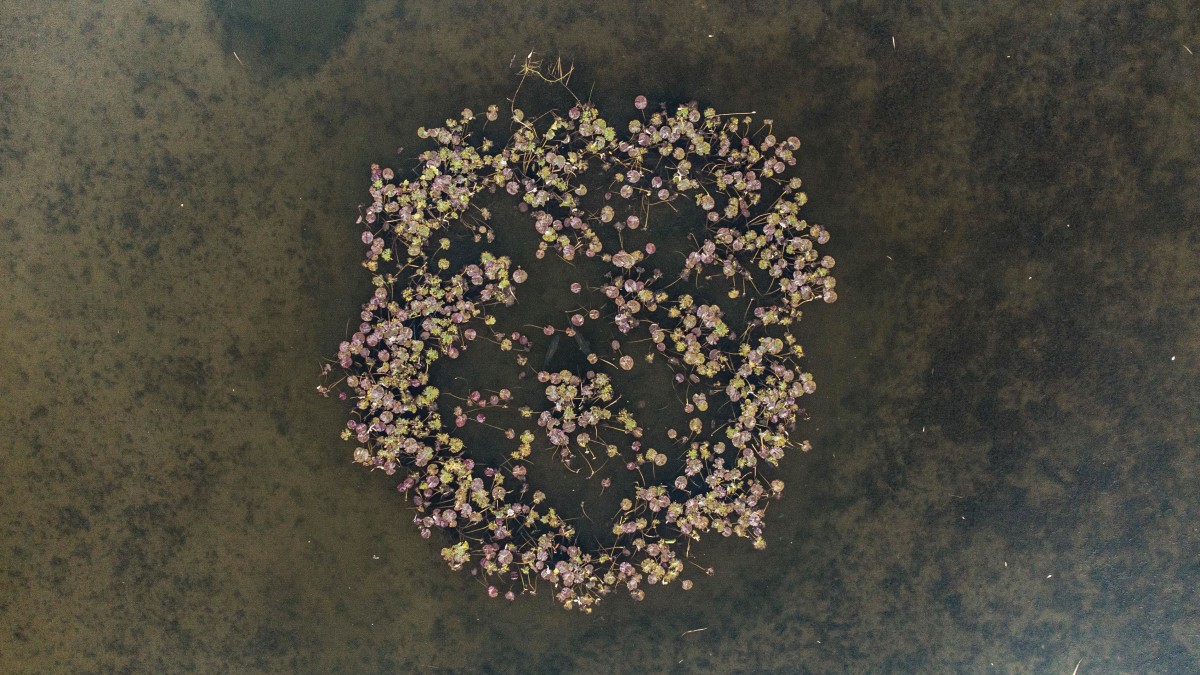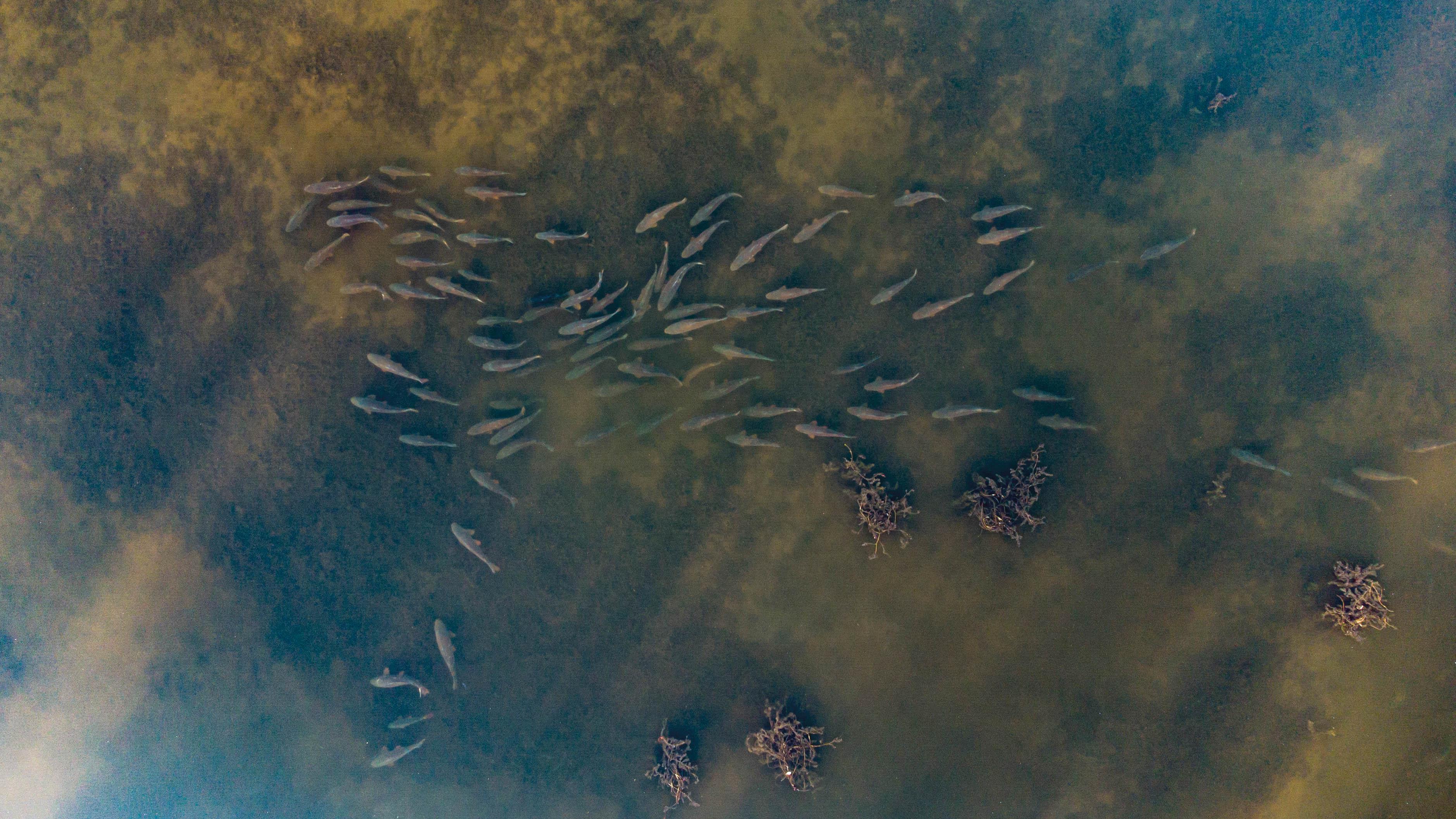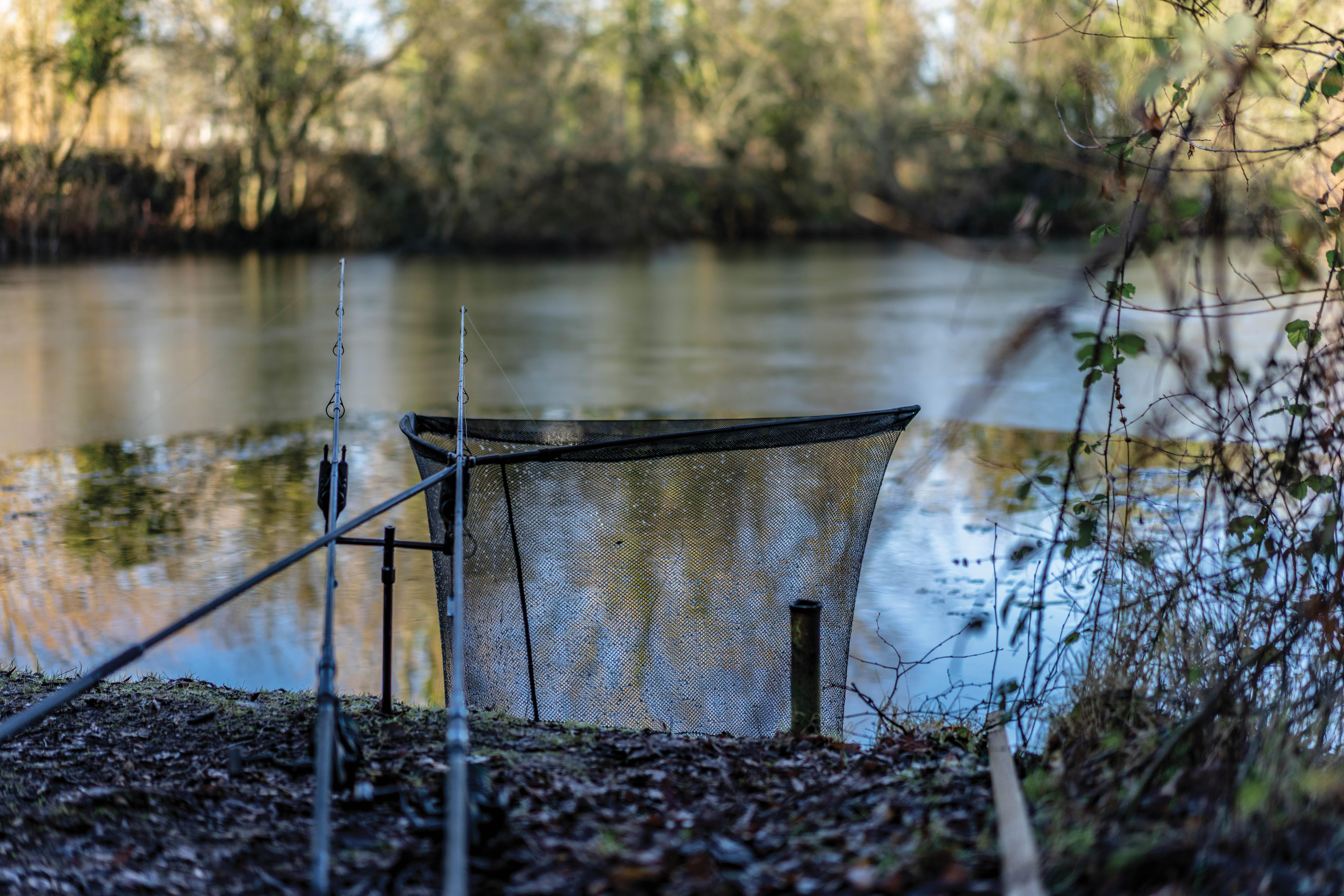
26 Ways To Improve Your Winter Location Skills
Getting it right is vital, so read on to brush up your skills.
1. Importance
Although still willing to feed, carp are far less transient during cold weather. They’ll be more inclined to stay in comfortable areas for longer periods, and will cover less ground. It is essential, therefore, that you fish where they are. There is little chance of them coming to you, so be willing to put more effort into locating them.
2. Setting expectations
With the carp being less active, there’ll be less to observe, so don’t think you’ll witness the multiple shows associated with summer. Expect to see fewer signs, but pay more attention to those you do notice, as these may have greater significance.
3. Frequency
As well as getting around less, they’ll also move less often. There may be short periods during which they give away their location, so you’ll need to be vigilant and make sure you don’t miss them. The plus side is that once you know when these windows are, you can concentrate your efforts accordingly.
4. Subtlety
It’s all against you here. You’ll see less movement, less often. And guess what? It’ll be less noticeable, too. When carp do move during the winter, they’ll usually do so more slowly and with less enthusiasm. Most signs will be more subtle, and so will prove tricky to observe. This calls for a slightly different mindset. Look for just a head silently breaking the surface, rather than a fish crashing out. A few subtle patches of bubbles might be enough to reveal a winter feeding zone, so do sweat the small stuff!
5. Don’t talk yourself into it
The danger of paying extra attention to the more subtle signs is that you can convince yourself that carp are responsible for everything. A few silver fish ‘plinking’ the surface can easily be attributed to carp bubbling; a submerged log might be misinterpreted as a fish laying up in a snag; and a diving tufted duck can be read as rolling fish. Try and stay pragmatic, and give more weight to definite sightings.
6. Anything’s better than nothing
Having said that, anything’s still better than nothing. In the absence of a concrete sighting to go on, the most minor thing can be worth bearing in mind. If all you find is roach, then at least you’ll know that the fish find that area comfortable to be in. A few pinprick bubbles might be a tench, an eel, a bream or merely gas, but then again…

7. Short days
Winter days are short, so make use of what daylight there is. If you’re not on them, reel in and go find them. You’ll have plenty of darkness in which to socialise, so try and remain alert and observant whilst you can see what’s going on—save the beer and banter for later.
8. In the dark
Cold-water carp seem to be more active during darkness. In winter, of course, you’ll spend most of any 24hr period in darkness, but seemingly lifeless areas will often come alive as soon as night falls. You might find that the activity starts later into the night as winter wears on, so it’s well worth staying up late, or getting up during the night, to see if anything’s happening.
9. Don’t dull your senses
You’ll have a lot of darkness to while away, and let’s be realistic, with all that tech and associated entertainment available, there aren’t many who will concentrate on the water, 100 per cent. Your eyes and ears are what will help you with location, so give yourself a chance and don’t block them both. Whilst listening to a podcast, or an evening football match on the radio, you can still keep your eyes on the water, and whilst reading a book you can still listen for showing fish… and if you like playing games on your phone, turn the volume off.
10. Kit
Your dark-brown, grey or blue mirrored polarised glasses might look the part, but they could well cut out too much light for winter’s gloomy days. More useful are those with amber lenses. These maximise what little light is available. Binoculars are especially handy for observing subtle signs, and a good pair will prove invaluable for spotting bubbling at range.
11. Clothing
What’s clothing got to do with location? Well, if your winter clothing is up to snuff, you’re more likely to spend time outside, looking and listening. You’re hardly going to notice the telltale signs whilst hunkered down in your bivvy, trying to stay warm. Good boots, quality waterproofs and warm underlayers will help keep you on top of your game.
12. Light levels
The sun sits lower in the sky during winter, and this can make observation tricky. In certain areas, any opportunity to see below the surface could be short-lived. This is particularly relevant when you’re peering into snags, and you may have to wait for the sun to reach a particular point, for it to illuminate a spot.
13. Time of day
You could find that the carp in your venue use different areas at different times of the day. Sunny days could see them frequent the tops of bars and plateaus, where the water is warmed by the sun’s rays. Will they do the off, however, as soon as dusk approaches…?
14. Water clarity
Cold water is clear water… well, that’s not necessarily true of the cloudy, heavily stocked waters, but it is for a lot of venues. Algae, and minuscule suspended creatures, are not so prolific during winter, so light will penetrate the water column further. Try and spend more of your time looking below the surface, rather than at it, waiting for a fish to break through.
15. Cloudy water
One of the advantages of clear water is that it makes it very easy to see spots that have been clouded up by fish activity. Feeding carp will often ‘milk’ the area up, but in murky venues, this won’t always be apparent. On crystal-clear lakes during winter, however, this should act as a beacon when you’re trying to pinpoint feeding carp.
16. South-westerlies
The carp angler’s instinct is to get on the end of a warm south-westerly, but it could be less beneficial to do so in winter. There are other influences at play, not least of which is water temperature. Whilst a spell of mild, wet and windy weather might encourage them to feed, it rarely has them charging up the other end of the lake as they might in spring or summer. Don’t ignore the wind, but similarly, don’t follow it blindly.
17. Cold winds
You’ll often read that carp don’t like to be on the end of a cold wind, but is this true? Well, yes and no. The air temperature is what it is, regardless of whether you are on the end of the wind, or sheltered on the back of it. As wind blows over our skin, even in the depths of winter, moisture evaporates, and just as it does in summer, it has a cooling effect and lowers our body temperature. Your weather app will confirm this, and will give you a lower, ‘feels like’ temperature, due to the wind chill. Wind chill requires air to have an effect, and so isn’t relevant underwater. That said, if the air is cold and the wind is rippling the surface, then the water will also be cooled. Cold water will move around and dissipate, so it’s down to you to work out where the carp find it most comfortable to be. We’re not saying you need to freeze your bits off every time you encounter a north-easterly, but don’t write off parts of the lake because of them.
18. They are where they are
In similar vein, it’s a dangerous game to write off any area automatically. Winter carp will be where they feel most comfortable, whether we approve or not. They might be found where we anticipate them to be, but just as often, they will be somewhere different altogether. Although it might be possible to work out how different weather conditions affect sport on certain parts of the lake, have an impact on which areas have the most stable temperatures or harbour a constant supply of food, it is certainly a complicated task, and there are a mass of variables to consider. It’s far more reliable to approach location with an open mind and look everywhere. You’ll be surprised at the places they hole up in during the winter, and whilst we might try and think like a carp, we don’t possess their instincts. Trying to second-guess them can prove a big gamble. They are where they are.
19. Similar features
You’d think that, having located a feature that the carp in your venue frequent, you’d find the same of other, similar areas, wouldn’t you? Well, that’s not usually the case. Just because they visit a particular shallow bay on sunny days, doesn’t mean other shallow areas will also be to their liking. Some island margins might be holding spots, whilst others, although similar in appearance, can be bereft of fish. Particular features may appeal, but it doesn’t follow that they’ll find others that are similar, and equally attractive.
20. Depth
Some anglers swear by deep water in winter, whilst others find success in the shallows. The reality is that there is no single depth that carp find more attractive than any other. It all depends on the layout of your particular venue, the weather patterns in any given year, conditions on the day, water temperature, pressure, available natural food larders and any number of other variables. If you’ve had success in the deep areas between the bars on your water, it’s well worth targeting them, but they might not be where you’ll catch them on another venue.
21. Summer areas
On some venues, you’ll find that carp will frequent completely different areas during the winter to those they favour through the warmer months. On deeper venues in particular, the shallower margins, tops of bars and plateaus will be abandoned until spring, the carp preferring deeper, silty areas, where there are still a few bloodworm to feed on. Bites can be had from spots you wouldn’t stand a chance with in warmer weather. On other lakes, and on shallow waters in particular, there will be features that carp find attractive all year round.
22. History
Studying past captures can prove very fruitful when fishing through the colder months. Winter holding areas may remain as such, year on year. Many lakes have an area or two where the carp stack up, and the swims you can reach them from might be your only realistic chance of a bite. Historic captures can be the key to a successful winter location, although sometimes you’ll come across a venue with no particular winter holding spots, and on these you’ll have to start each year afresh.
23. Mild winters
While the jet stream remains over the country, we enjoy southerly and westerly winds, warm days, and the overcast skies retain the heat. If the jet stream dips and misses us, cold, Arctic weather will take hold. We experience frosts, along with clear, sunny days, and cold, still nights. Every so often, we benefit from a winter during which the jet stream remains over us for extended periods. Our weather is then dominated by mild conditions which keep water temperatures up. Not only are these conditions very productive, they’ll sometimes keep the carp in the same areas they frequent during warmer times.
24. Features
Now, although we’ve banged on about not having any preconceived ideas regarding where you’ll find them, there are a few features that take on particular significance during winter. Snags have to be number one on that list. They won’t all appeal, and they might sit in a very precise part of an obstruction, but there’s no doubt that carp find them attractive. Any areas that offer a sudden change in depth, such as a steep-sided bar or sudden drop-off, are a good bet. These provide a selection of depths, and so the carp are able to find a comfortable temperature, along with security and cover. Reedbeds can be stacked full of carp through the whole winter period, and are a great feature to pay attention to, however shallow. Island margins are another banker, especially those that are steep-sided or offer some cover. Old weedbeds give cover and warmth, and once again may hold a population of fish right through the winter.
25. Lakebed
There will probably be some cleaned-off gravel in the snags, but silty areas of the lakebed are likely to hold more natural food during cold weather. A soft thud might indicate a potentially better area than the donk from your lead is it lands on clean gravel.
26. Birdlife
Whilst waterfowl can be a real pain, they can also disclose a great deal through the lean, cold periods. By observing where the ‘tufties’ feed, you can pinpoint the same, precious areas of natural food that the fish are using. A coot sounding the alarm in a reed bed can indicate the presence of carp, while hunting grebes will show you where fish find the water temperature acceptable.




